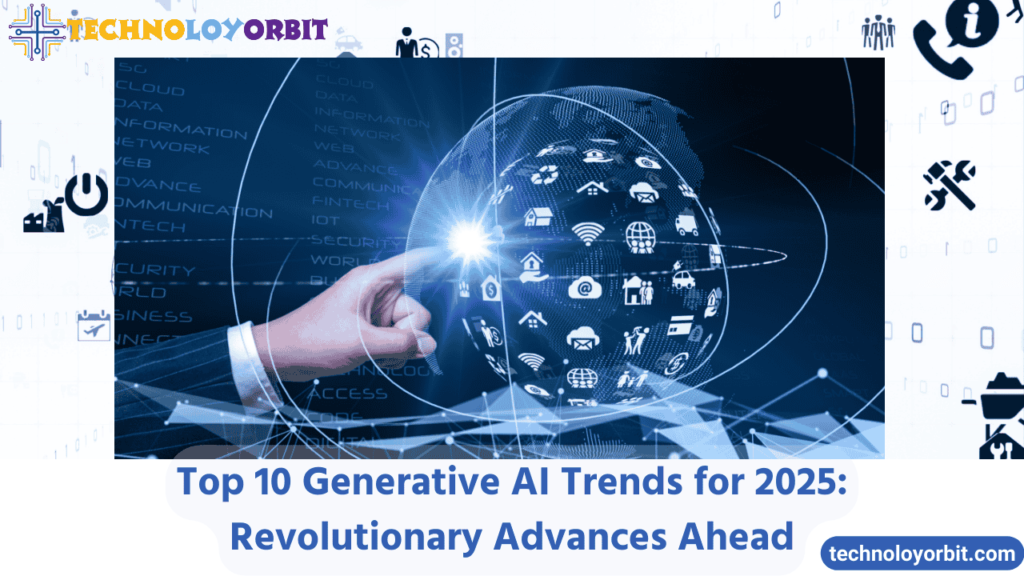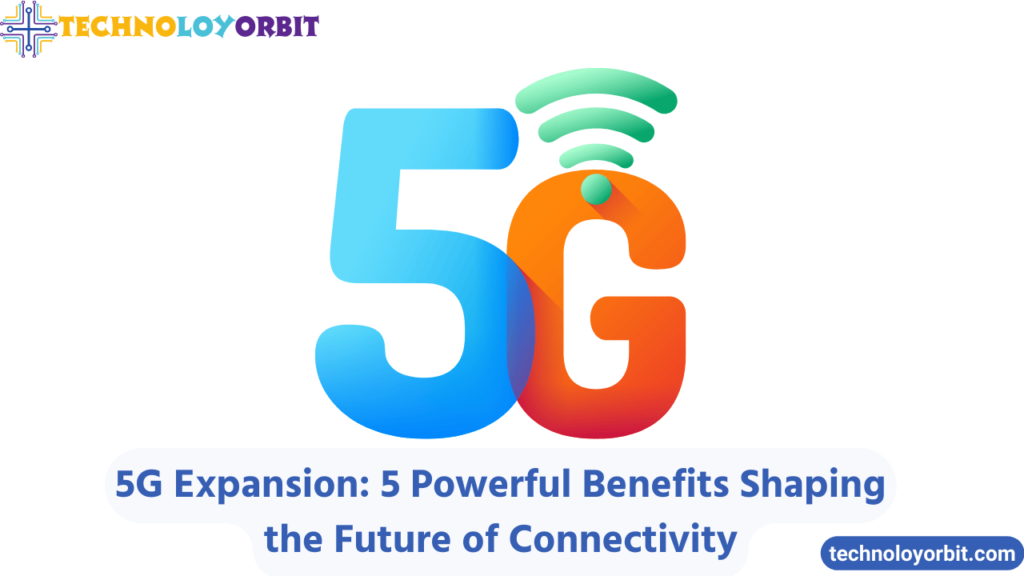Generative AI is a technology that creates realistic content, including images, text, and videos, by learning patterns from vast datasets and utilizing neural networks and deep learning.
As we move further into the digital age, Generative AI is emerging as one of the most powerful innovations. By leveraging deep learning and neural networks, generative AI can autonomously create new content, such as images, text, music, and videos, in a way that closely resembles human creativity. As the technology continues to evolve, it promises to transform various industries, from entertainment and fashion to healthcare and education.
This article explores what Generative AI is, how it works, and the key technology trends for 2025. We’ll also look at its advantages, limitations, and its potential to revolutionize content creation. Additionally, we’ll address ethical considerations, offer predictions for its future, and include answers to common questions.
Understanding Generative AI and Its Working Mechanism
What is Generative AI?
Generative AI is a subset of artificial intelligence focused on creating new content that imitates human-created outputs. Through training on vast datasets, generative AI models learn patterns, styles, and structures, enabling them to generate realistic content in multiple formats. At its core, Generative AI uses sophisticated algorithms such as Generative Adversarial Networks (GANs), Variational Autoencoders (VAEs), and Transformers to achieve high-quality outputs.
In practical terms, this technology can produce everything from realistic image generation to natural language processing tasks, including text generation, summarization, and translation. These capabilities allow for automation in various sectors and the creation of personalized content that can cater to user preferences.
How Does Generative AI Work?
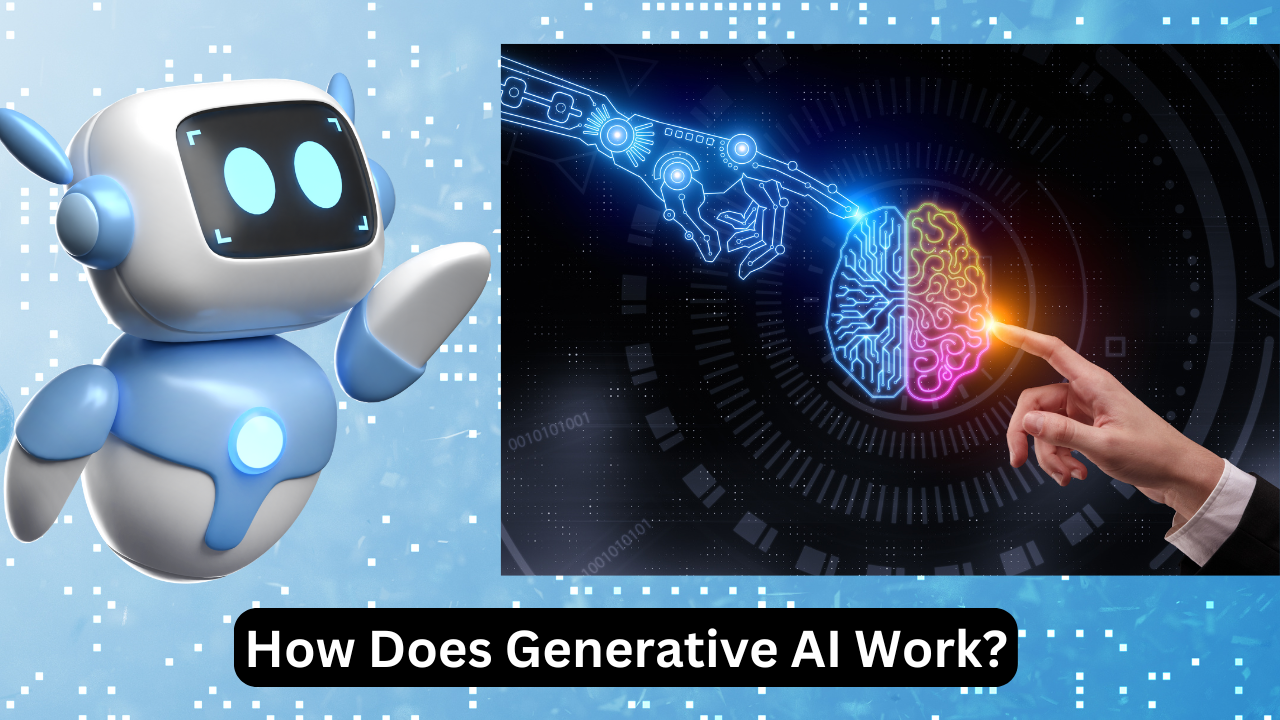
Key Steps in the Generative AI Process
- Data Collection: Gathering vast amounts of data relevant to the desired output, such as images, audio files, or text.
- Model Training: Utilizing deep learning algorithms to train the generative model, enabling it to recognize patterns and features within the dataset.
- Latent Space Representation: The model develops a latent representation, a condensed mathematical form of the learned patterns, to facilitate realistic content generation.
- Content Generation: Sampling points within the latent space and converting them into new content that resembles the training data.
- Refinement: Iteratively improving the model to enhance the quality and realism of the generated content.
These stages combine to make generative AI a powerful tool for producing human-like content at scale. By employing methods like reinforcement learning and fine-tuning, developers can achieve high levels of precision in the generated outputs.
Core Components of Generative AI
| Component | Function |
|---|---|
| Generative Models | Algorithms like GANs and VAEs that facilitate content generation |
| Neural Networks | Architectures such as RNNs, CNNs, and Transformers to enable deep learning |
| Training Data | Large datasets that feed the model with examples for pattern recognition |
| Latent Space | A condensed representation of learned data, crucial for generating realistic outputs |
| Reinforcement Learning | Feedback systems that enhance model accuracy and content quality |
| Preprocessing & Tokenization | Preparing data to be understood by models, especially for text-based outputs |
Types of Generative AI Models
1. Generative Adversarial Networks (GANs)
GANs work through two competing networks—a generator and a discriminator. The generator creates content, while the discriminator evaluates it. This competition pushes both networks to improve, resulting in highly realistic outputs.
2. Variational Autoencoders (VAEs)
VAEs generate new samples by encoding data into a lower-dimensional space (latent space) and then decoding it to produce similar outputs. VAEs are often used for image generation and are especially valuable for producing content with subtle variations.
3. Autoregressive Models
Autoregressive models generate sequences by predicting each element based on previous ones, making them ideal for text generation and language modeling.
4. Flow-Based Models
These models use invertible transformations to generate complex data distributions from simpler ones, making them valuable for applications where preserving data structure is essential.
5. PixelCNN
PixelCNN models each pixel of an image in a sequence, enabling it to generate high-quality images with controlled features.
Trends in Generative AI Technology for 2025
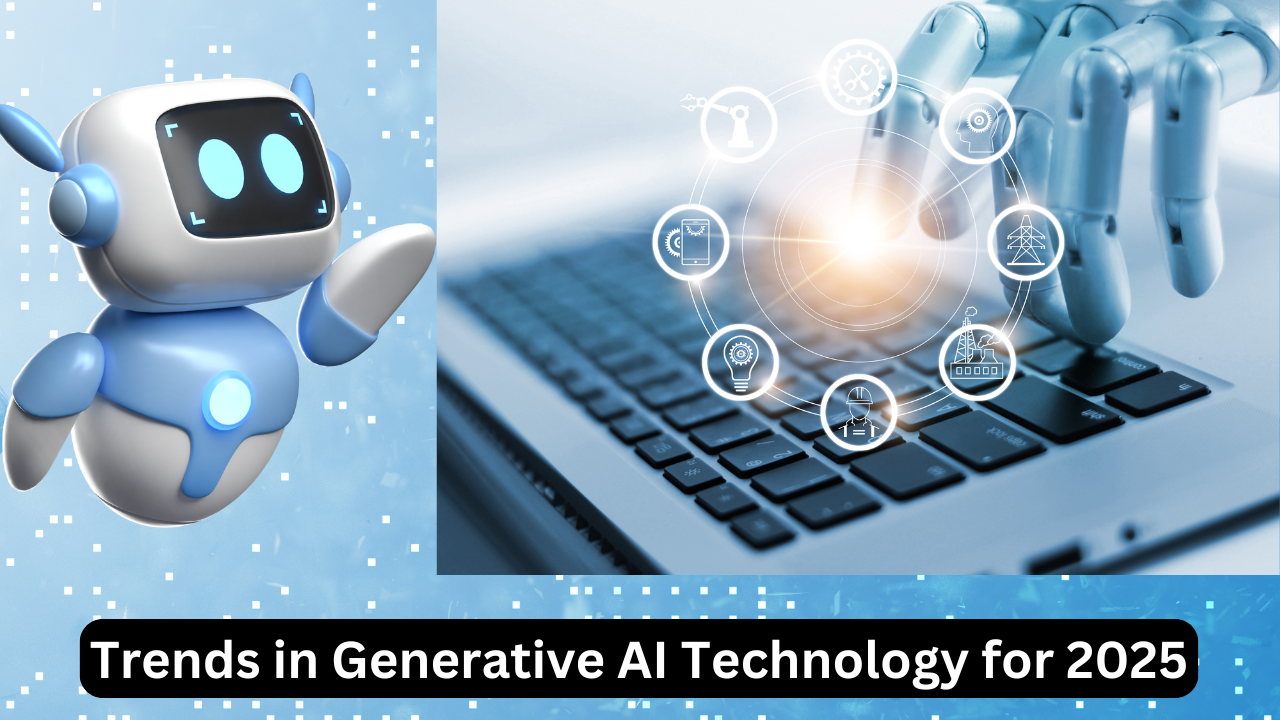
1. Increased Sophistication of Models
In 2025, Generative AI models are expected to become even more sophisticated, enabling the generation of content that is nearly indistinguishable from human-created work. Advancements in deep learning and neural network architectures will contribute to this refinement, enhancing AI’s ability to create detailed and realistic content across various formats.
2. Growth in Multimodal AI
Multimodal AI, which integrates multiple types of content like text, images, and sound, is set to expand in 2025. Multimodal AI applications will allow for seamless interactions across content types, such as AI-generated videos with synchronized soundtracks and realistic dialogue, enriching user experiences in areas like entertainment and marketing.
3. Expansion of AI in Creative Fields
AI is anticipated to take a prominent role in creative fields, such as graphic design, music composition, and storytelling. In 2025, Generative AI will assist artists and creators by providing ideas, enhancing content quality, and automating repetitive tasks, allowing them to focus more on high-level creative decisions.
Use Cases of Generative AI Across Industries
Image and Video Generation
Generative AI can produce high-quality images and videos, which are essential for marketing, entertainment, and social media. AI-generated content is increasingly used for product design, advertising, and even virtual influencers.
Natural Language Processing (NLP)
Generative AI enables advanced text generation capabilities, powering chatbots, virtual assistants, and content generation applications. Companies can use NLP-powered generative AI to enhance customer support, streamline communication, and produce personalized content.
Medical Imaging and Drug Discovery
In healthcare, Generative AI helps generate synthetic medical images that aid in diagnostics, allowing for more precise and varied datasets. Additionally, it supports drug discovery by simulating molecular structures, accelerating the development of new drugs.
Fashion and Design
In the fashion industry, generative AI creates unique designs and customizes recommendations based on user preferences. Fashion brands can utilize AI-generated patterns and styles, while consumers benefit from personalized fashion options.
Advantages and Limitations of Generative AI
Advantages of Generative AI
- Creativity and Novelty: Provides new content creation ideas and enhances human creativity.
- Automation and Efficiency: Saves time and resources by automating repetitive tasks.
- Personalization: Generates custom content that meets specific user preferences.
- Data Augmentation: Synthetic data helps improve the accuracy of AI models in various applications.
Limitations of Generative AI
- Ethical Concerns: AI-generated deepfakes and biased content pose ethical challenges.
- Dataset Bias: The quality of generated content is only as good as the data it’s trained on.
- Computational Demands: Requires substantial computational resources, making it expensive to implement.
- Quality Control: Achieving consistency and coherence in generated content is challenging.
Ethical Considerations in Generative AI
As Generative AI technology advances, ethical considerations become critical. Issues such as bias in training data, the spread of misinformation through deepfakes, and privacy concerns need addressing. For instance, AI-generated images or texts can perpetuate stereotypes if the model is trained on biased data. Regulatory frameworks and best practices in data handling are necessary to ensure that generative AI is used responsibly.
The Future of Generative AI: What Lies Ahead?
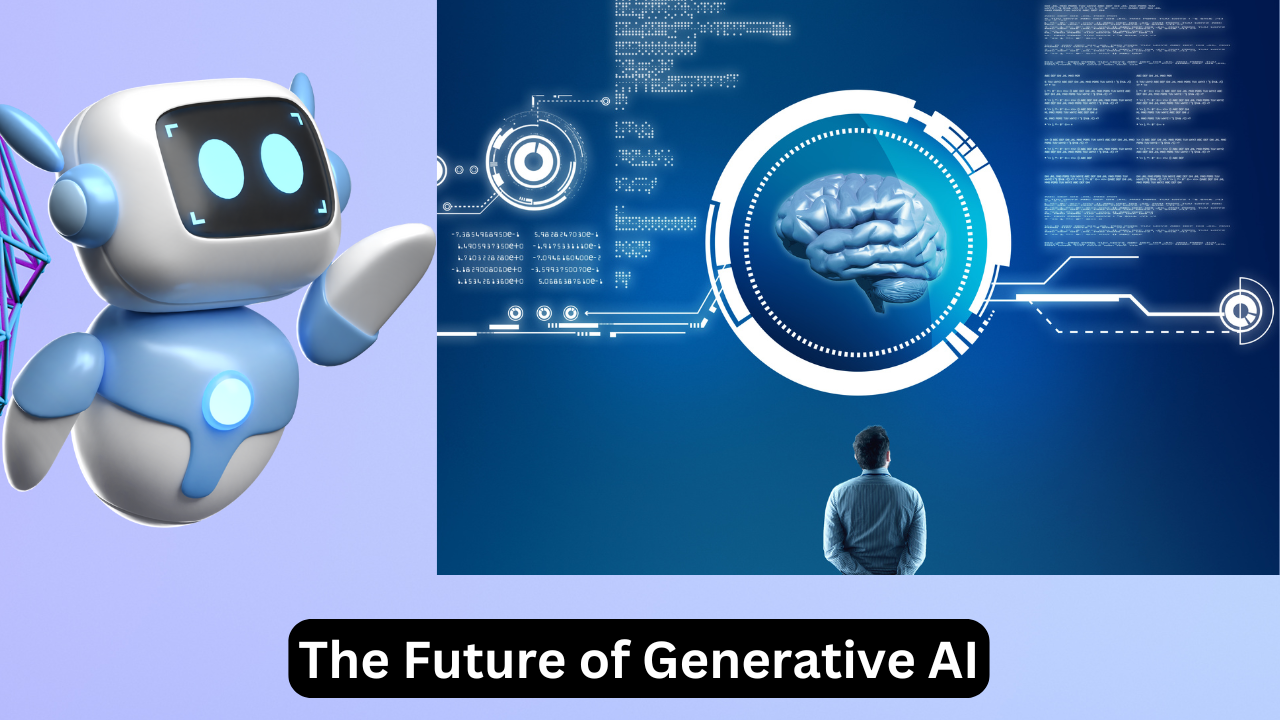
The future of Generative AI looks promising, with several potential developments on the horizon:
- Highly Realistic AI Models: Models will continue to become more realistic, creating content that is virtually indistinguishable from human-made work.
- Enhanced Ethical Standards: More regulations are expected to emerge, ensuring that generative AI use aligns with ethical standards.
- Integration Across Industries: As AI matures, it will integrate into everyday applications, from personalized marketing to automated content creation.
- AI-Driven Decision Making: Generative AI can support businesses and scientific discovery, leading to data-driven strategies and innovative breakthroughs.
Frequently Asked Questions (FAQs)
What is the primary use of Generative AI?
Generative AI is primarily used to create new content that mimics human creation, such as images, text, music, and videos, across various industries.
How does Generative AI differ from traditional AI?
Traditional AI focuses on recognizing patterns and making predictions, while generative AI goes a step further by creating new content.
What are GANs, and why are they important in Generative AI?
GANs, or Generative Adversarial Networks, are a type of generative model that creates realistic content through a competitive process between a generator and a discriminator.
Can Generative AI replace human creativity?
Generative AI can enhance human creativity by automating repetitive tasks and providing inspiration, but it cannot fully replace the unique insights of human creativity.
What are the ethical concerns surrounding Generative AI?
Ethical concerns include the potential misuse of deepfakes, privacy issues, and the perpetuation of biases within AI-generated content.
How can businesses benefit from Generative AI?
Businesses can leverage Generative AI for automated content creation, customer personalization, product design, and data augmentation.
Is Generative AI expensive to implement?
Yes, implementing high-quality Generative AI models requires substantial computational power and resources, which can be costly.
What role will Generative AI play in the entertainment industry?
Generative AI can create customized visual effects, interactive storytelling, and even AI-generated characters, enhancing user engagement in the entertainment sector.
Conclusion
Generative AI holds immense potential to revolutionize content creation, offering unparalleled efficiency, personalization, and innovation. As we look toward 2025, the advancements in AI technology trends promise to make AI even more integral to various fields. With ethical guidelines and responsible use, generative AI can become a transformative force that redefines creativity and reshapes industries. The journey of generative AI is just beginning, and its future seems as limitless as human imagination itself. Please follow out blog Technoloyorbit.

